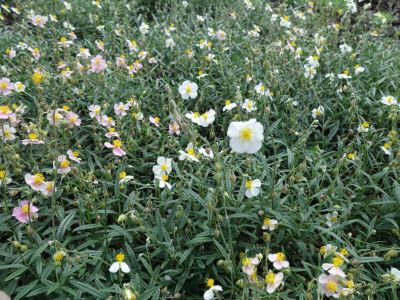What are Helianthemum Plants?
Sunroses are closely related to Cistus but produce much smaller flowers. They can be used in the garden in similar circumstances but where a smaller shrub is preferred. The foliage is attractive, and they grow in a neat form. This might be the perfect plant for your landscape. Now all you need to know is how to grow sunrose. Sunroses are low, spreading plants. They generally only get 12 inches (30.5 cm.) tall but have a broader spread. The foliage is evergreen and silvery green. It almost looks like it has been lightly frosted, leading to another of the plant’s names, Frostweed. From midspring to early summer, the semi-woody stems are decorated with five-petaled, single, or double blooms in hues of orange, pink, peach, red, white, or yellow. Each flower only lasts a day, but the plant produces them prolifically for constant seasonal color.
How to Grow Sunrose
Select a well-draining neutral to alkaline, full sun to partial shade location for growing helianthemum flowers. The helianthemum sunrose does not need particularly fertile soil. They are suitable for USDA zones 5 and above. In southern climates plant them where a little shade occurs at the highest sun point of the day. Mulch around the plants to protect the roots from winter cold and prevent weeds. The helianthemum sunrose actually prefers to be kept a bit on the dry side. The spent flowers will simply drop off and do not need deadheading to keep the best appearance. If you are using the plants as a hedge, plant them 1 to 2 feet (30.5-61 cm.) apart.
Sunrose Care
This is a really tolerant plant but will need consistent moisture at planting and until established. Once mature, water plants when the soil is completely dry. You will only need to fertilize in poor soil but avoid high-nitrogen food when growing helianthemum flowers, as blooms will be sacrificed and limp, and excess growth is promoted. After blooming has stopped, prune the plant back by 1/3. In certain climates, this can lead to a second bloom. Sunrose has no serious disease or pest issues. The most common problem is root rot when planted in heavy clay soil. There are several cultivars of helianthemum, all of which are deer resistant.
